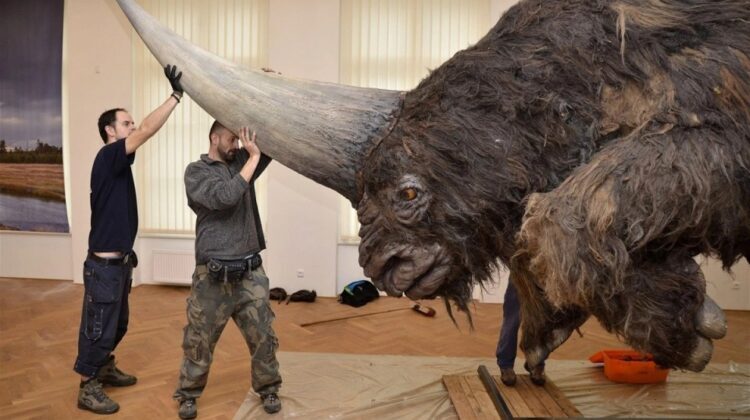
New research by Australian scientists shows that “unicorns” lived alongside humans and were only made extinct by climate change.
The giant, shaggy Ice Age rhinoceros (Elasmotherium sibiricum), known as the Siberian unicorn because of its extraordinary large single horn, was thought to have become extinct some 200,000 years ago.
That theory has been debunked by an international team of researchers from Adelaide and Sydney, as well as London, the Netherlands, and Russia.
In a study paper, published Tuesday morning in the scientific journal Nature Ecology and Evolution, researchers say the Siberian unicorn became extinct only 36,000 years ago.
The study found the most likely cause of the species’ demise was a reduction in grassland due to climate change, rather than the impact of humans.
Weighing up to 3.5 tonnes with a single enormous horn, the Siberian unicorn roamed the steppes of Russia, Kazakhstan, Mongolia, and Northern China.
The University of Adelaide’s Australian Centre for Ancient DNA (ACAD), analysed the DNA of the Siberian unicorn for the first time and found the giant animal was the last surviving member of a unique family of rhinos.
“The ancestors of the Siberian unicorn split from the ancestors of all living rhinos over 40 million years ago,” co-author and ACAD researcher Dr Kieren Mitchell said.
“That makes the Siberian unicorn and the African white rhino even more distant cousins than humans are to monkeys.”
This new genetic evidence overturns previous studies that suggested the Siberian unicorn was a very close relative of the extinct woolly rhino and living Sumatran rhino.
Researchers also dated 23 Siberian unicorn bone specimens, confirming that the species survived until at least 39,000 years ago, and possibly as late as 35,000 years ago. The Siberian unicorn’s final days were shared with early modern humans and Neanderthals.
“It is unlikely that the presence of humans was the cause of extinction,” Professor Chris Turney, climate scientist at the University of New South Wales said.
“The Siberian unicorn appears to have been badly hit by the start of the ice age in Eurasia when a precipitous fall in temperature led to an increase in the amount of frozen ground, reducing the tough, dry grasses it lived on and impacting populations over a vast region.”
Other species that shared the Siberian unicorn’s environment were either less reliant on grass – like the woolly rhino – or more flexible in their diet – like the saiga antelope – and escaped the Siberian unicorn’s fate, though the woolly rhino eventually became extinct 20,000 years later.

Leave a Reply